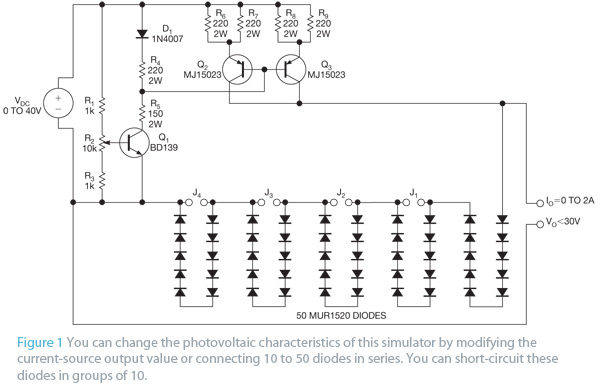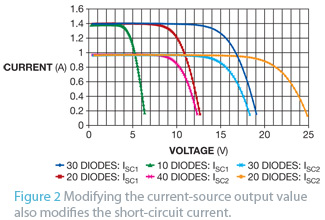Electronics engineers often use photovoltaic-module simulators to test dc/dc-power converters, inverters, or MPPT (maximum-power-point-tracking)-control techniques. The use of these simulators lets you work in the laboratory with predefined photovoltaic conditions, thus avoiding the drawbacks of real photovoltaic modules. Various commercial simulators are available, but they are often expensive.
This Design Idea presents a simple circuit that works as a photovoltaic-module simulator using a dc-voltage source as its input. The circuit employs the simplest equivalent circuit of a photovoltaic module: a current source in parallel with a diode. The output of the current source is directly proportional to the irradiance, and the characteristics of the parallel diode change with temperature.
The current source in Figure 1 operates at a short-circuit current as high as 2A and employs two MJ15023 power bipolar transistors, Q2 and Q3, working in the linear region. The value of the current is proportional to the transistor’s base current. You can control the short-circuit current with potentiometer R2, whose change in value forces a variation in Q1’s collector current and, thus, the base current of Q2 and Q3.
Circuit implements photovoltaic-module simulator
The circuit has 50 MUR1520 diodes that connect in series and are in parallel with the current source. You can short-circuit these diodes in groups of 10, so you can choose the number of series diodes: 10, 20, 30, 40, or 50. If you need more precision, you can increase the number of diode groups in the simulator, providing more output curves.
For more detail: Circuit implements photovoltaic-module simulator


